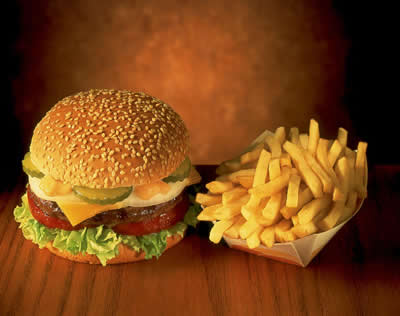|
|
  The Distillate The Distillate
|
|

Should Chemists Unionize? Share your thoughts and see how your peers responded by clicking on the question above. |
|
|
|
|
THE BUSINESS CORNER
Boom, Gloom and the New Normal - Part 2
(Access Archives for Part 1)
By Paul Hodges, International eChem

The financial crisis and the New Normal
What have demographics to do with demand? That's the key question we'll tackle in this month's issue.
In a completely new, and challenging analysis, we argue that the Western BabyBoomers (those born between 1946-70), have been responsible for the major growth in chemical demand over the past 20 years:
- In the USA, for example, the number of people aged between 25 - 54 years soared from 74 million in 1970 to 128 million in 2010 (41% of the total population).
- As they settled down and had children, they boosted demand in key consuming sectors such as housing, autos and electronics.
They also made it very easy to manage the economy. The Federal Reserve could raise interest rates temporarily to head off higher inflation. This would then create 'pent-up demand' when rates were reduced again. After all, more Boomers were entering the age group all the time, and those already in it needed to consume more as their children grew up.
But today, this is no longer the case. US housing starts are now below 600k - not only well below their 2.2 million peak in 2006, but below anything seen since records began in 1959. Auto sales are in the 10 - 12 million range, compared to 15 - 17 million between 1995 - 2007.
We believe demographics are behind these dramatic changes.The 72% growth seen in the number of 25 - 54 year olds between 1970 and 2010 is yesterday's story. Instead, the growth sector has become those in the 55+ age bracket. They can expect to live for an extra decade, compared to their parents' generation.
So the Boomers have moved on from being a high-spending generation. Instead, they are becoming a high-saving generation, as they need to save more to survive a longer retirement. And therefore the failure of the various government stimulus programmes over the past 2 years should be no surprise.The concept of pent-up demand is now wishful thinking.
We argue that these facts need to be more widely understood, by chemical company managements as well as policymakers. We could then focus on the new opportunities now emerging to supply the 55+ generation, for example. As we will discuss in future chapters of the eBook, there are plenty of new ideas (such as the global megatrends concept), to power the next wave of global growth.
The key issue is that we need a change in mindset.Those companies who continue to expect stimulus measures to deliver a return to the Golden Age are likely to be disappointed. Instead, the winners will focus on understanding how to profit from the demographic changes now underway, as we transition to the New Normal.
Please go to www.icis.com/NewNormalEbook to download Chapter 2.
This business insight is brought to you by Paul Hodges, Chairman of International eChem and renowned ICIS Chemicals and the Economy blogger. Sign up to learn and chat with Paul on ACS Webinars on the 2011 Chemicals and the Economy Mid-Year Analysis and Projections. Email us chemical business topics you would like us to cover in future issues.
Back to Top Page |
|
CONSULTING TIP OF THE MONTH
ON YOUR OWN - OR AS A TEAM?
by David H. Vahlsing, PE, Chemical Consultants Network
Some consultants work alone and some join with others to share workload and to create a business entity that can be stronger than the sum of the individuals. How can you decide which form is best for you?
Your client(s) and the personalities of you and your potential partners will probably impact this choice more than any other factors.
For example, if you expect assignments of long duration with just a few clients, you clearly don't need to team up. You will probably sign contractual agreements (after review by a good lawyer) that could be in place for years. You won't need marketing or much accounting help either. Your client will also provide you with all of the unseen and often unappreciated support systems that keep businesses humming.
However, if you don't expect to work for just one client, then teaming up with others is worth consideration. Running a small engineering and technology business today is extremely complicated if you have multiple clients, work in several States and produce a work product that must be documented. If your jobs are varied and of relatively short duration, a constant stream of proposals, contracts and finished reports is required and they must be produced in quantity and with attention given to good appearance and accuracy. Nothing sells your next job better than the very well done project, delivered on time and within budget. Can you effectively carry out all of these activities yourself?
If your targeted market is a large variety of clients and you enjoy working with others who have similar business interests, then look for partners with whom to share both the challenges and successes of being in business for yourself. They should be people you know well and respect for their technical and ethical standards. They must be understanding of the difficulties of business startup and have the ability to withstand disappointment when many of your first proposals as a new company are rejected.
Each of the partners should bring a skill set for handling different aspects of your business. For example, I sold our services 75% of my time, sought out prospective new associates, and contributed technically in certain areas of the petroleum refining and energy use fields. Our home office person processed monthly time sheets, client invoices, tax payments to many governments, insurance, salary checks and still occasionally managed to work on projects as a highly skilled Professional Engineer. My other partner managed all client contractual matters, agreements with associates, published all technical reports, created our marketing literature, managed our computerized systems, provided highly skilled technical advice and served as an expert witness.
Your business might require other skills than noted above but many of these activities will be common to any multi-client business that does technical work. This three-person owner mix worked extremely well for us...but we carefully and deliberately explored our respective interests and fit before forming HEA, which has since become a division of Becht Engineering. Our early discussions as to business goals and how we each could contribute toward achieving them clearly paid off! You too should evaluate your company options including a single person consultancy, teaming up with partners or joining as an employee of a specialty engineering or research organization.
 David H. Vahlsing, PE, previously President of Hydrocarbon Engineering Associates, Inc, now manages the Philadelphia office of Becht Engineering Company, Inc. www.becht.com David H. Vahlsing, PE, previously President of Hydrocarbon Engineering Associates, Inc, now manages the Philadelphia office of Becht Engineering Company, Inc. www.becht.com
Have a comment? Go to Chemical Consultants Network LinkedIn page.
This monthly tip is brought to you in collaboration with the Chemical Consultants Network. Next month's Consulting Tip will discuss combining a consulting practice with a laboratory.
Back to Top Page
|
|
THE WRITING CORNER - MANUSCRIPT AND GRANTS
Shake Up Your Writing Process - 3 Tips to Make it Painless
By Kristin Sainani, PhD., Stanford University.

Writing is hard. But it doesn't need to be a slow and torturous process. Here are three tips to make your writing more fun and efficient:
1. Get organized first.
Are you constantly toggling away from your manuscript to hunt down information in Pubmed, Google, or the thin layer of papers strewn about your office? If so, you're conflating writing (composing prose) with gathering information-and needlessly dragging out the writing part. Instead, gather and organize your information first: arrange key facts and citations from the literature into a crude outline; and put your data into tables and figures. Then write. Not only will the writing fly by, it will come out more organized.
2. Don't be a perfectionist.
Never aim too high on a first draft. If you find yourself reluctant to go onto the next sentence until the preceding one is perfect, your perfectionism is holding you back. The goal of the first draft is to get the ideas down in sentences in order; don't worry if it's clunky or even downright gauche-elegance happens in revision.
3. Write on the go.
Next time you are driving or exercising alone, turn off the radio or ipod and work on your manuscript in your head. Free of distractions and the pressure to produce, your mind will make new connections, re-organize ideas, and write your most memorable lines. Have a pen and paper ready to jot it all down at the end of your trip.
 Kristin Sainani is a clinical assistant professor at Stanford, where she teaches statistics and manuscript writing. She is also a freelance health and science writer. Kristin Sainani is a clinical assistant professor at Stanford, where she teaches statistics and manuscript writing. She is also a freelance health and science writer.
Want more tips? View Kristin's recorded presentation.
Email us your writing questions or tips you would like us to cover in future issues.
Back to Top Page
|
ACS Webinars - Four Informative and Delectable Channels
|
ACS Webinars™ CLICK * WATCH * LEARN * DISCUSSLearn more and register at www.acswebinars.org- Your Career GPS
- July 14, 2011 - Publishing Your Scientific Research: Chat with Editors.
- Professional Growth
- Aug 4., 2011 - 7 Highly Effective Marketing Techniques for Chemical Consultants.
- Business and Innovation
- July 7, 2011 - Chemistry & The Economy Mid-Year Review.
- July 21, 2011 - Who's Around the Corner? Performing Technology Scouting and Market Feasibility Analysis.
- July 28, 2011 - SBIR Funding Opportunities with NCI/NIH - Priority Areas for 2012.
ACS Webinars™ connects you with subject matter experts and global thought leaders in chemical sciences, management, and business on relevant professional issues. More information and registration...Have ideas? Email us your suggestions for future ACS Webinars topics. Please include 'Webinar Topic Suggestion' in the subject line. Back to Top Page
|
Featured Archived Content:" Wow Your Crowd: Presenting Online with Power" with Jeff Hiller of JB Training SolutionsYou may be familiar with traditional strategies for effective in-person presentations, but do you know how to dazzle your audience ONLINE? Online presentations will continue to be more popular - get ahead and learn how to wow your crowd.  | | Wow Your Crowd - Presenting Online with Power |
Back to Top Page
|
 2012 National Chemical Technician Award 2012 National Chemical Technician Award
Nominations for the 2012 National Chemical Technician Award (NCTA) is now open. Nominees must be currently employed as a chemical technician, and must have worked as a chemical technician for a minimum of five years. Nominees do not need to be an ACS member. The award will consist of a trip for the winner and a guest to the Spring ACS National Meeting; March 25-29, 2012, San Diego, CA. Additionally, the awardee will receive a $1000 honorarium at a dinner held in their honor in San Diego.Nomination packets must be received by the Committee on Technician Affairs (CTA), no later than September 30, 2011.
Visit www.acs.org/ncta for nomination criteria, complete details and to download the nomination or re-nomination form. Send questions to cta@acs.org.
Back to Top Page
|
Upcoming meetings that may be of interest to you:
- July 18-20, 2011 - Organic Microelectronics & Optoelectronics Workshop VII, San Francisco, CA.
- Aug. 28-Sept.1, 2011 - Fall 2011 ACS National Meetings and Exposition in Denver, CO. Mark your calendar!
Back to Top Page |
 Lens of Science and the Market: Lens of Science and the Market:
How to Position your GREEN and SUSTAINABLE MATERIALS.
67th SWRM. Austin, Texas. November 11, 2011. $150 per team. The ACS's Division of Business Development & Management, Division of Small Chemical Business, Women Chemists Committee and the National Collegiate Inventors and Innovators Alliance /VentureWell invite you to attend an all day workshop focused on translating your research into a commercial innovation at the 67th Southwest Regional Meeting this year in Austin, Texas. This is an excellent opportunity for existing teams of 2 to 5 innovators to relate their research on green and sustainable materials to market definitions, segmentation and technical solutions. Space is very limited, so please apply early! Register at: http://www.swrm2011.org/registration/ Back to Top Page |

Joint ACS/SOCIETE DE CHIMIE INDUSTRIELLE MEETING. Wednesday, September 14, 2011. New Business Paradigms for Pharmaceutical Companies. Rudy Baum, Editor-in Chief of Chemical & Engineering News, will moderate a discussion with Columbia University Prof. Ronald Breslow and former Pfizer Global R&D President John LaMattina on what's broken in the classical drug company model, what's fixable, and what types of pharmaceutical companies will succeed in the future. Register: societedechimie@yahoo.com or 212-725-9539 or pay in advance at http://www.societe.org/calendar.htm
Back to Top Page
|
Want your events included in The Distillate and/or ACS Webinars webpage? Please email us your events info with the subject title EVENTS.
|
 What to do with a degree in Chemistry? What to do with a degree in Chemistry?
You can do anything! Did you know that Margaret Thatcher graduated from Oxford University and she was a research chemist at Mr Whippy ice cream. Well, learn about what other chemists in Britain are doing.
Read the Guardian article...
Back to Top Page
|
 Notable Chemists (beyond Transition State) Notable Chemists (beyond Transition State)
Last month we featured chemists who have transitioned into food-entrepreneurs. This month, we are featuring chemist-turn-politicians. Across the pond, we have Dr. Angela Merkel, Chancellor of Germany, who wrote her thesis on Quantum Chemistry. Don't you wish you had paid more attention to those quantum lectures?
Know other notable chemists we should feature? Write to us at distillate@acs.org.
Back to Top Page
|
 Why Used Cooking Oil is Better in Browning French Fries? Why Used Cooking Oil is Better in Browning French Fries?
Thank you to the many stellar chemists who rose to the challenge - Alex Woo, Erica Bakota, Toby Rossman, Gopal Chotani, and Guy Crosby. Special thanks to Guy Crosby, Associate Professor at Framingham State University, and Science Editor, Cook's Illustrated Magazine and America's Test Kitchen for his detailed explanation below. Aren't you glad that you are a chemist?
A satisfactory discussion of why used cooking oil is better for browning fried foods can be found in the book by Clyde E. Stauffer, "Fats and Oils", Eagan Press, 1996, distributed by the American Association of Cereal Chemists (see chapter 6 Frying Fats). In addition, a simple experiment confirming the observation that used oil performs better, along with a brief explanation, can be found in Cook's Illustrated Magazine, May and June, 2009, page 30. A review of frying french fries can also be found in Critical Reviews in Food Science and Nutrition, 41 (2): 133-154 (2001).
There are six stages in frying fat condition ranging from "new fat" to "Runaway" fat (very degraded). The intermediate four stages are called "break-in", "fresh", "optimum", and "degraded" condition. During multiple uses the triglyceride content of new fat changes from >98% to approximately 65% in runaway fat, while so-called polar fat components increase from < 2% to 35%, and free fatty acids increase from 0.03% to 8% in new fat and runaway fat, respectively. Polar fat and free fatty acids are formed by the hydrolysis and oxidation of the triglycerides during repeated use. Optimum frying fat is characterized as containing 80% triglycerides, 20% polar fat, 12% polymers, and 3% free fatty acids (Stauffer, Table 6-2, page 85).
Polar fat includes di- and mono-glycerides, and free fatty acids, that act as surface-active agents. These products are formed by the reaction of triglycerides with water released from frying food such as potatoes. Once formed the polar fat components accelerate further hydrolysis. The formation of surfactants in used fat reduces the surface tension between water released from the food and the frying fat, allowing the food to remain in contact with the hot fat for longer periods as water in the form of steam is released from the food (seen as bubbles rushing out of the food). Steam rushing out of the fried food tends reduce the contact of the fat with the food. The presence of increasing amounts of surface-active agents increases contact between the hot fat and food resulting in better heat transfer that fries and browns the food faster. More browning creates more flavor via caramelization and Maillard reactions, and a crispier texture. For these reasons Cook's Illustrated recommends saving a cup or two of used frying fat to mix with fresh fat (a ratio of 1 cup used fat to 5 cups fresh was recommended as best for frying).
Frying fat that has gone beyond the "optimum" stage begins to form excessive amounts of oxidation products resulting in an unpleasant rancid taste. Of greater concern is the increased levels of hydrolysis products, especially free fatty acids, that lower the smoke and flash points of the fat. An informative graph is shown on page 20 of the book by Stauffer which plots the temperatures of the smoke, flash, and fire points of soybean oil that has been adulterated with known quantities of free fatty acids. The smoke point of soybean oil containing 0.05% free fatty acid is approximately 410-420 degrees F, but decreases to 250 degrees F when the concentration of free fatty acid is increased to 10%.
Back to Top Page
|
 What color and shape of Fireworks is considered to have the most challenging chemistry? What color and shape of Fireworks is considered to have the most challenging chemistry?
In celebration of July 4th, we are again calling all chemists to rise to the challenge. We all enjoy watching fireworks but how much chemistry do you know behind the boom, the bang, and the flash. If you know the answer, please write to us and we will publish it in the next issue of The Distillate.
Back to Top Page
|
 Meet newest members of the Periodic family. Meet newest members of the Periodic family.
The chemical family celebrates the addition of two family members, elements 114 and 116, to the Periodic Tables of Elements. These two newborns are heavy babies with atomic weights of 289 and 292 atomic mass units respectively. No names yet!
Read the Wired article...
Back to Top Page
|
 Win an ACS 'International Year of Chemistry 2011' lapel pin. Win an ACS 'International Year of Chemistry 2011' lapel pin.
"The true scientist never loses the faculty of amazement. It is the essence of his being." by ???
Send us your correct answer to win the lapel pin. Three winners will be selected for this popular pin. This month's quote was submitted by Eric Walters from Rosalind Franklin in IL.
Email us (distillate@acs.org) your answer by July 15, 2011 to be entered into the drawing. Please use QUOTE for the subject line. The answer to the quote and the winners will be posted in next month's edition.
Congratulations to Michael Mitchell of Georgia, Hui Wu of Japan, and Éven J. Lemieux of Canada. June's winners were randomly selected from all the correct entries received. Thank you to all who entered the contest.
Have a quote to share? Send us (distillate@acs.org) your favorite scientists' quotes and if we use your submission, we will send you a surprise prize.
Back to Top Page
|
Reach >100,000 scientific professionals. If you would like to submit an article, news, or upcoming events for next month's
newsletter, email us by 5:00 pm Eastern Time on the third Friday
of the month to imp@acs.org. Inclusion is subject to space and
editorial discretion.
|
|
|
|
|
Back to Top Page
About this e-mail: You are receiving this newsletter because you are an ACS member. ACS Industry Member Programs respects your privacy and will not sell, lease, or share your e-mail address with any other organization. ACS Industry Member Programs will only use e-mail for the purpose of conducting ACS business. To update your email or to unsubscribe, please click on the links below. The views expressed in the Distillate are those of the authors and do not necessarily reflect the views or policies of the ACS.
|
|
|
|
|
|